Embracing the Changing Workforce and Preparing for Generation Z
What Does This Mean for Engineering Firms?
By Mary Kate McGowan, Associate Editor, News
From ASHRAE Journal Newsletter, June 2018
Gen Z has made it to the engineering workplace.
Generation Z, those born after 1997, will face sizable challenges that include finding solutions to complex economic, social and environmental concerns such as fixing aging infrastructure, identifying viable energy sources and improving energy efficiency, among other challenges.
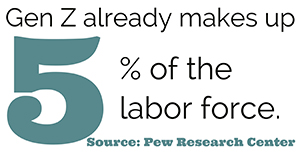
As the industry gears up to address those challenges amid changing workforce demographics and technology, the HVAC&R industry must prepare for Gen Z, said Dave Palty, Member ASHRAE, Regional Vice-Chair of ASHRAE’s Grassroots Government Advocacy Committee.
The workplace has already changed greatly in the past few decades with computers and programming being no longer luxuries but necessities. From low global warming potential (GWP) refrigerants to the Internet of Things (IoT), the HVAC&R industry itself has also changed and is on the trajectory for that progress to accelerate.
Following the pattern of younger generations entering the workplace, Generation Z is facing challenges and changes. For Baby Boomers, those born from 1946 to 1964, those challenges included the Vietnam War. For Generation X, those born from 1965 to 1980, there was the AIDS crisis.
“The industry has to be prepared for this generation coming through,” Palty said. “(The industry is) changing, and this generation is part of that change.
Getting to Know Gen Z
Palty said Gen Z is the “smartest generation,” and they can access information quickly. When they do not know information, they use their smartphones and devices to fill the information, watch tutorial videos and learn how to fix a problem, he said.
According to Palty, members of Gen Z:
- are independent.
- like to know what is going on.
- like to be challenge.
- want to move quickly.
- are under lots of pressure to succeed.
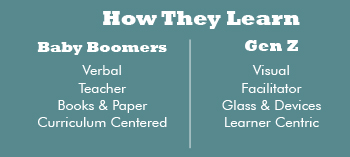
“We’ve got to make sure we’ve investing in them. They want that kind of commitment from the folks. And if we don’t do it, they’re more than happy to switch and do something different and quickly,” said Palty.
To fulfill these needs, Palty said companies and organizations need to provide abundant training opportunities to help these workers develop in order for those companies and organizations to retain them.
At the 2018 ASHRAE Annual Conference in Houston, Palty is set to address how engineers and the HVAC&R industry can prepare to work with this younger generation and how the HVAC&R industry can recruit these people in the seminar, “Generation Z: Ready or Not, Our Industry's Future Depends on Them and It's Sooner Than You Might Think.”
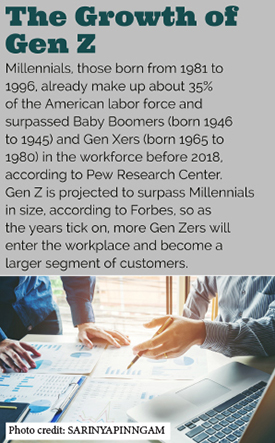
Generation Z and Millennials, those born 1981 to 1996, are not the same groups of people. One, where Millennials are digital-dependent, Gen Z is digital native, said Palty.
While both generations grew up during the rise of social media, some members of Gen Z cannot remember life without the internet. The oldest Millennials were born in 1981, when the first IBM personal computer had a 4.7Mhz processor. The latest iPhone, iPhone X, has processors from 1900 to 2100 Mhz.
Training for the Future
To prepare both the industry and its workers for the changing employee demographics, succession planning is important, said Chris Kopach, Assistant Vice President of Facilities Management at the University of Arizona and the 2017-2018 APPA (Association of Physical Plant Administrators) president.
Kopach is Palty’s co-presenter In Houston, and the presentation is partnership between organizations as evidenced in Memorandum of Understanding.
In his role at the University of Arizona, Kopach oversees the university’s Building Trades Apprenticeship Program that provides on-the-job training and classroom instruction for those training to be a Journey Worker in their designated trade including HVAC mechanics.
In the program, a younger worker is paired with a more experienced one who passes along one-the job knowledge learned from experience. The program’s goal is to cut down the learning gap for younger employees as the older ones prepare to retire, he said.
Retaining institutional knowledge is critical, especially as the younger workforce will face sizable engineering challenges.
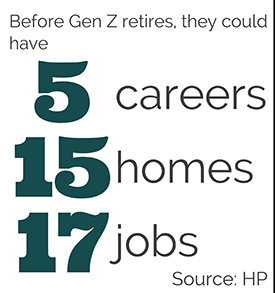
Kopach said buildings and systems are aging, and within the next 10-30 years, those systems will have been kept operating for almost double their life span.
Replacing those aging systems is a great opportunity to bring in more energy efficient equipment, and the workforce who is now in their 20s and 30s will be major players in this transition, he said. Other engineering challenges could include tying buildings into microgrids, he said.
Solutions to Ease Changes
Gen Z will not only transform the industry as workers, but also as consumers. Palty said Gen Z will drive innovation with technology, hyperconnectivity and collaboration.
“We can't be status quo in how we deal with these folks. Whether it’s giving them inspiration about our industry and recruit them to paths that are available, once we get them, keeping them excited and doing those things,” he said.
Palty said Gen Zers:
-
want full service and not just a product. Gen Z will be looking for convenience and user friendliness and could buy a concept or function rather than a particular product. To appease this change, Palty said the industry will have to shift to a more service-based model.
-
want to pay for a service when it is needed. Gen Z is comfortable in the sharing economy, as evidenced by Uber and Netflix. The Internet of Things (IoT) and other technologies will enable customers to share and consume resources more efficiently on the basis of a pay-as-you-go principle. To mitigate this change, the HVAC&R industry needs to create business models that fulfill customer’s expectations while remaining viable for business.
-
care about the impact they have, which can include living sustainably. The challenge for the industry will be to find the right balance between making affordable, quality products while keeping in mind environmental and social concerns.
-
are digital natives. They are hyper-connected and connect with others through social media. Those poses a security challenge with increased integration of information and communications technologies (ICT).
Kopach and Palty offered more solutions to help attract skilled employees to the industry including:
-
Adopt new technologies and products to prioritize available skilled labor.
-
Recruit all groups of people, including women, veterans and immigrants.
-
Start a mentor program.
-
Invest in training opportunities for new and longtime employees.
-
Partner will schools starting in elementary schools.
-
Offer paid internships.
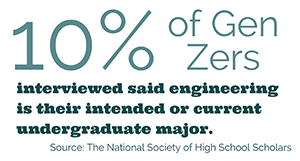
ASHRAE Journal wants to hear from you. Send comments and story ideas to ASHRAE_Journal_Newsletter@ashrae.org.